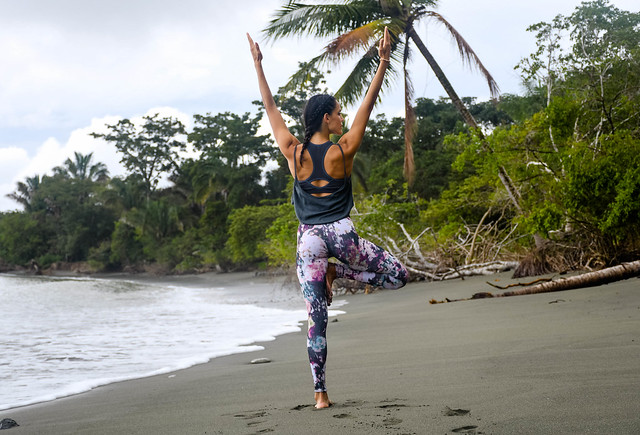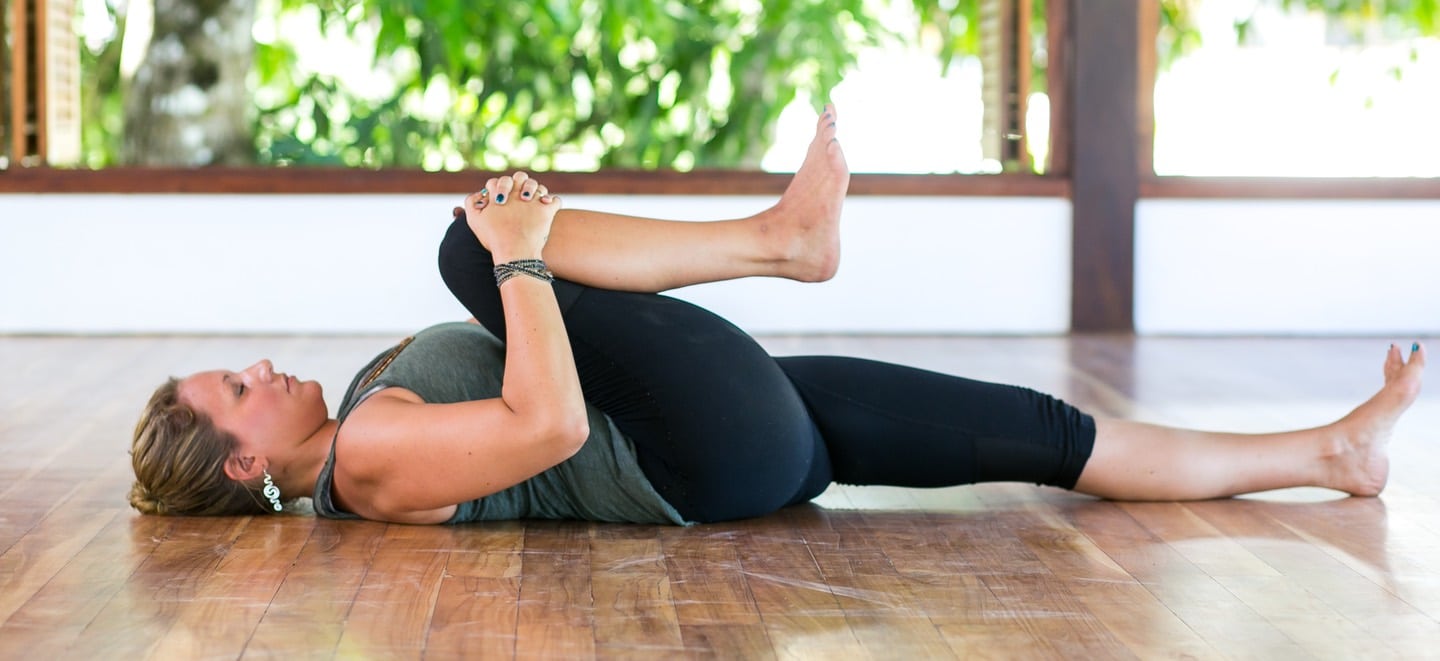Travel makes us feel stiff, even if it is to join a yoga retreat. You arrive at your destination feeling tense and eager to get into your first yoga class. But be wary of jumping straight into a high-intensity activity because the dehydration and lack of movement can make you more vulnerable to injury. Here are a few yoga poses for post-travel that will help you to reconnect back into your body.
Want to start a yoga program that will help you to become pain-free?
Flow Yoga: How to Approach Your Yoga Poses for Post Travel
The tightness is dehydration of your fascia. Fascia is a connective tissue that wraps around the entire body including muscles, bones, and organs. It responds to light buoyant quality in your movement to help it rehydrate (as well as drinking water). Your body needs at least 30-40 minutes from a fixed shape (sitting) to rehydrate the fascia. So, ease into movement mindfully after long periods of travel.
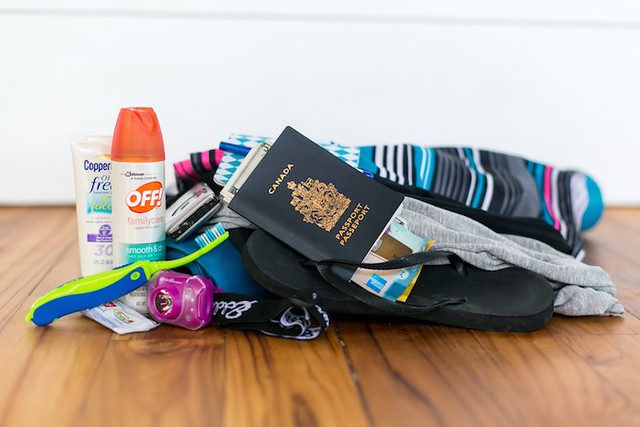
How to move is key for fascia rehydration. You want to find fluidity in your movements, easing into poses from various angles and moving around within the pose – gentle and small. You can bounce with a ‘gliding’ quality with the goal to create smooth and flowing movements.
Focus on Grounding
To ground, draw your attention to the point of your body contacting the ground. Notice it’s connection and see if you can feel a stronger pull of energy from the Earth as you press down more firmly into the ground. Be aware of your feet, legs and base of the pelvis into the groin area that both open and activate to bring it back to balance.
Grounding Yoga Poses
Tadasana (mountain pose) – Get back to feeling the Earth! Bring your feet hip distance for this variation as it is more grounding. Check-in with your feet and their connection to the ground tracing up into your pelvis. Can you feel the arches of your feet suck energy from the earth giving you strength?
OPTION: Add a side stretch if you need to open the side body, and perhaps gently rotate the chest forward and back as you reach taller.
Standing Root Meditation – Stand in Tadasana with feet hip distance apart. Visualise your feet growing roots into the earth. Let the roots connect deep down to the core of the earth. Once your roots are planted begin to draw the energy from the Earth into your legs and up through your body. Visualise yourself a tall tree strong and stable with your crown reaching towards the heavens.
Ardha Upanasana (wind relieving pose) – Sitting tightens our hip flexors. This pose does both actions of the hip flexors in one! The bent knee shortens and softens the hip flexor, whilst the straight leg lengthens and opens the hip flexor. Actively reach through the straight leg, grounding down through the foot as though standing on it. Press the straight thigh into the ground whilst keeping the tailbone down to the Earth. Soften the belly as you exhale to release the bent leg closer to your chest.
OPTION: Add a twist to the spine by spinning the bent knee towards the ground, if you feel that you need to open the spine to release. Keep the opposite shoulder on the ground throughout.
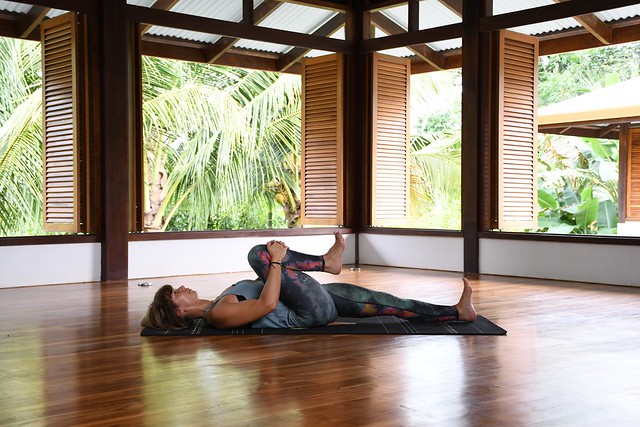
Baddha Konasana (bound angle) – It is great to open the groin, the area of our root chakra that is key to our feeling grounded. The external rotation at the hip joint helps release the hip flexors and softens the abductors of the hip. Sit with a tall spine, keep the souls of the feet connected and draw the knees towards the floor with the muscles in your hip to strengthen and lengthen them in one hit.
OPTION: Add a supported backbend with a bolster or block to open the chest. Be careful of your lower back and keep the tailbone reaching towards your heels.
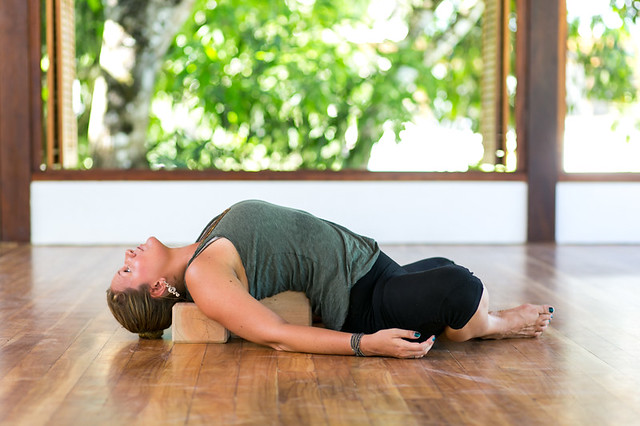
Setu Bandha Sarvangasana (bridge) – Reawaken and strengthen your back body as you drive your feet and shoulders into the ground to lift the hips up. This lengthens the hip flexors counter to sitting. To mobilize your spine, roll up and down focusing on each vertebra placing sequentially as you lift the hips up.
OPTION: At the top of the pose, lift one foot at a time keeping the hips level to test how grounded you are. Keep the foot connection strong on your standing base.
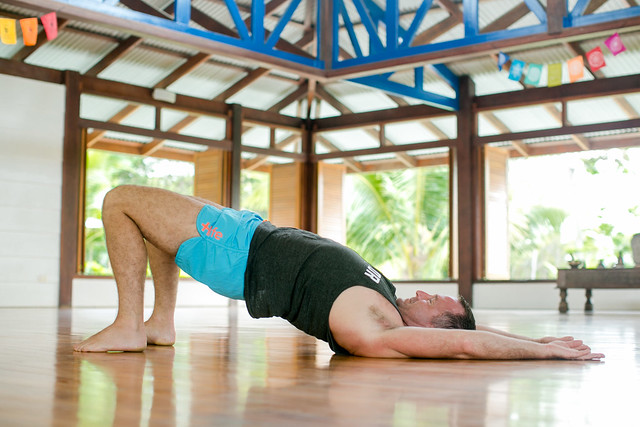
Utkatasana (chair) – How we get out of our seat is often forgotten about. Activate your glutes, quadriceps, and hamstrings from sitting to stand with this pose. Keep the feet hip distance to reinforce the ‘grounding’ message to your body, press down through the whole foot evenly, keep the knees over the ankles and in line with the second toe, and drive from your backside upwards to halfway. Ensure the low belly pulls in towards the spine to protect the low back.
OPTIONS: With prayer hands, lengthen and twist your chest to the side for spinal mobilization and abdominal activation.
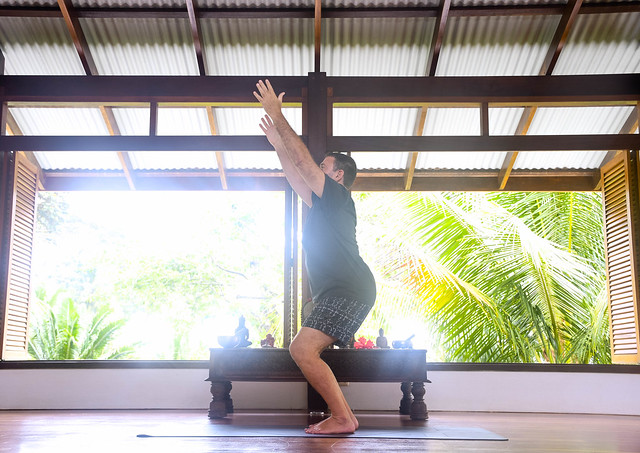
Anjaneyasana (low lunge) – Separation of the legs adds a new balance challenge to getting grounded. Keep the hips square by scissoring the inner thighs to strengthen the pelvis and legs. Lift the pubic bone towards your hip bones to deepen the hip flexor stretch. Bend your front knee over the ankle in line with the second toe and draw the thigh bone back into the hip socket to work the abductors (side hip). Straighten and bend your back leg to add to the balance challenge.
OPTION: Add a twist towards the front leg to lengthen and invigorate the thoracic spine.

Virabhadrasana 2 (warrior 2) – Feel strong and prepared for your new adventure by using hip abductors to open your pelvis to the side. Turn your front foot forward and back foot to 45 degrees, open the hips to the side. Press the front knee to the outside of your foot and your back outside foot into the ground to work the hip muscles. Mindfully play with moving your torso around whilst keeping the legs still. It will challenge your balance, grounding and core suppleness.
OPTION: Go into and explore Utthita Parsvakonasana (extended side angle pose) to further rotate and side lengthen the waist and spine.
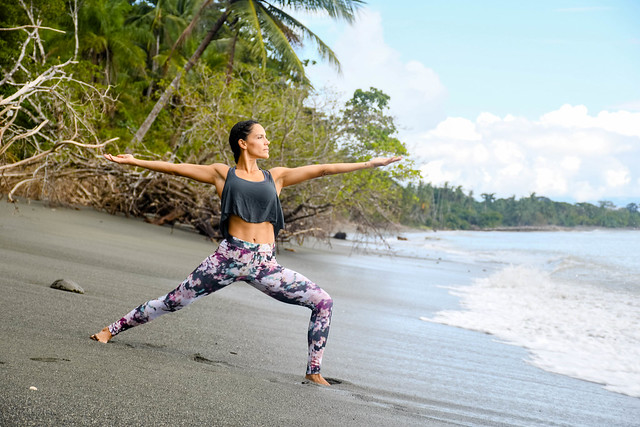
Vriksasana (Tree) – A one leg standing balance is a great test of how grounded you feel. Vriksasana opens the hip without twisting the pelvis and allows you to focus on stabilizing each leg one at a time whilst keeping your spine and torso square. Keep hands in prayer at heart center. If your balance is challenged, then keep a toe on the ground.
OPTION: Lift hands up into a V shape above your head and change your gaze upwards.
